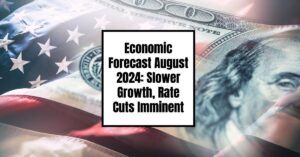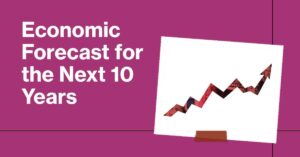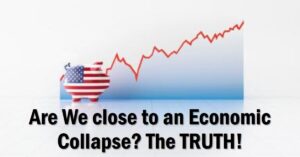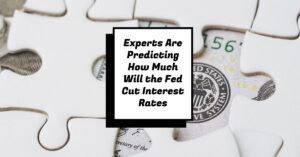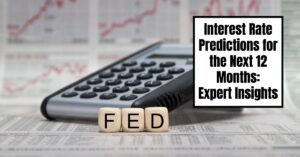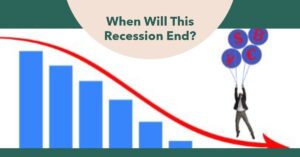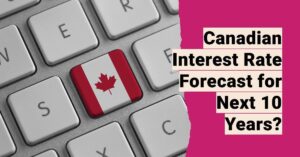The U.S. economy continues to demonstrate its resilience, as evidenced by the robust GDP growth in Q2 2024. However, a closer look reveals emerging signs of cooling within the labor market, a trend that will likely shape the economic outlook for the remainder of the year.
U.S. Economic Outlook – Freddie Mac – August 2024
Q2 2024 GDP Growth and Its Drivers
The Bureau of Economic Analysis (BEA) reported that the U.S. economy expanded at an annualized rate of 2.8% in Q2 2024, a significant jump from the 1.4% growth recorded in Q1 2024. This positive trajectory was primarily fueled by:
- Increased Consumption Spending: Consumer spending, a key engine of economic growth, accelerated to 2.3% annualized growth in Q2, compared to 1.5% in Q1 2024. This indicates continued consumer confidence, despite inflationary pressures.
- Private Inventory Buildup: Inventory accumulation contributed significantly to Q2 growth, potentially signaling a strategic move by retailers to mitigate supply chain disruptions and ensure adequate stock for the upcoming holiday season.
- Strong Non-Residential Investment: Businesses continued to make substantial investments, with non-residential investment surging by 5.2% on an annualized basis. This signifies a high level of business confidence and a positive outlook for future growth.
However, the housing market showed signs of slowing down. Residential investment declined, marking the first dip after three consecutive quarters of growth. This suggests that the housing market, impacted by rising mortgage rates, may be losing some of its momentum.
Labor Market Shows Signs of Cooling
While the overall economic picture appears bright, the labor market is exhibiting a slight cooling trend. The Bureau of Labor Statistics (BLS) reported that July's nonfarm payroll gains were 114,000, lower than anticipated. Additionally, the unemployment rate edged up to 4.3%, reaching its highest point since November 2021. Despite these indicators, the three-month moving average for job gains remains relatively robust at 170,000, indicating continued, albeit moderated, job creation.
Here are some key takeaways from the latest labor market data:
- Job Openings Declining: The number of job openings decreased slightly in June 2024, reaching their lowest level since March 2021. This suggests that the demand for labor might be easing.
- Lower Quits Rate: The quits rate, a measure of employee confidence, also decreased to 2.1% in June, the lowest level since November 2020. This could indicate that workers are less inclined to switch jobs, potentially due to concerns about economic uncertainty.
- Wage Growth Moderates: While still above pre-pandemic levels, wage growth has shown signs of moderation. Average hourly earnings rose 3.6% year-over-year in July, a decrease from the previous month's increase.
Inflation Continues to Moderate
One of the most encouraging trends in recent economic data is the continued moderation of inflation. The Federal Reserve's preferred inflation gauge, the core Personal Consumption Expenditure (PCE) Price Index, rose by a mere 0.2% month-over-month in June 2024, bringing the year-over-year increase to 2.6%. This is significantly lower than the peak inflation rates observed in 2022 and indicates that the Fed's efforts to combat inflation are gaining traction.
The Consumer Price Index (CPI) also painted a positive picture, with a 0.1% decline in June 2024 compared to the previous month. This marked the first monthly decline since the onset of the pandemic. Year-over-year, the CPI rose by 3.0%, the lowest increase since March 2021.
The cooling of inflation can be attributed to several factors, including:
- Easing Supply Chain Disruptions: Global supply chains, which were severely disrupted during the pandemic, have shown signs of improvement. This has helped to alleviate some of the upward pressure on prices.
- Declining Energy Prices: Energy prices, a significant contributor to inflation in 2022, have fallen considerably from their peak levels. This decline has provided some relief to consumers and businesses alike.
- Federal Reserve's Monetary Policy: The Federal Reserve's aggressive interest rate hikes appear to be having their intended effect of slowing down the economy and curbing inflation.
Freddie Mac's Outlook for the Remainder of 2024 and Beyond
Freddie Mac's baseline economic outlook anticipates continued, albeit moderate, economic growth for the remainder of 2024 and into 2025. The labor market is expected to soften further, with job growth slowing down and the unemployment rate potentially ticking up slightly.
Given the cooling labor market and moderating inflation, Freddie Mac expects the Federal Reserve to initiate rate cuts sooner rather than later. This anticipated shift in monetary policy is already impacting the mortgage market, putting downward pressure on mortgage rates. As a result, Freddie Mac forecasts a gradual decline in mortgage rates in the coming quarters.
Key Takeaways for Consumers and Businesses
- Moderate Economic Growth: While the U.S. economy remains strong, growth is expected to moderate in the coming quarters. This suggests a period of steady, but potentially slower, economic activity.
- Cooling Labor Market: The labor market is showing signs of cooling, with job growth slowing down and the unemployment rate ticking up slightly. This could create a more favorable environment for businesses looking to hire, but may also lead to slightly slower wage growth.
- Moderating Inflation: Inflation is expected to continue moderating in the coming months, providing some relief to consumers and businesses facing rising costs.
- Declining Mortgage Rates: Freddie Mac anticipates a gradual decline in mortgage rates in the coming quarters, which could provide some support for the housing market.
Conclusion
The U.S. economy is currently navigating a period of transition, characterized by strong but moderating growth, a cooling labor market, and easing inflationary pressures. The Federal Reserve's upcoming monetary policy decisions will be crucial in shaping the economic outlook for the remainder of 2024 and beyond. Freddie Mac's baseline scenario suggests a soft landing for the economy, with continued growth and moderating inflation. However, it is important to monitor economic data closely for any significant deviations from this baseline scenario.
ALSO READ:
How Strong is the US Economy Today in 2024?
Economic Forecast: Will Economy See Brighter Days in 2024?
Will the Economy Recover in 2024?
Economic Forecast for Next 10 Years
